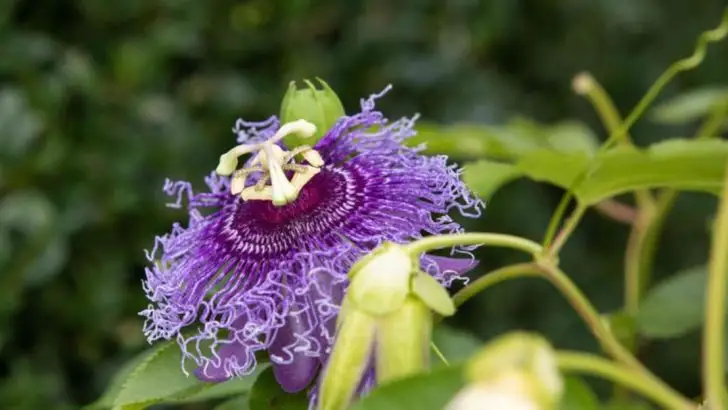Vining plants can add height, shade, and drama to any garden—but not all of them are worth the price tag when bought as seedlings. In fact, many grow quickly and easily from seed, making it more cost-effective (and just as satisfying) to start them yourself. Others might struggle with transplant shock or simply don’t perform well when introduced mid-growth.
This list highlights 17 common vines that are better off started from seed or cuttings. From morning glories and sweet peas to nasturtiums and moonflowers, you’ll discover which climbers are best grown the old-fashioned way—and why buying them as seedlings might just be a waste of money and time.
Wisteria
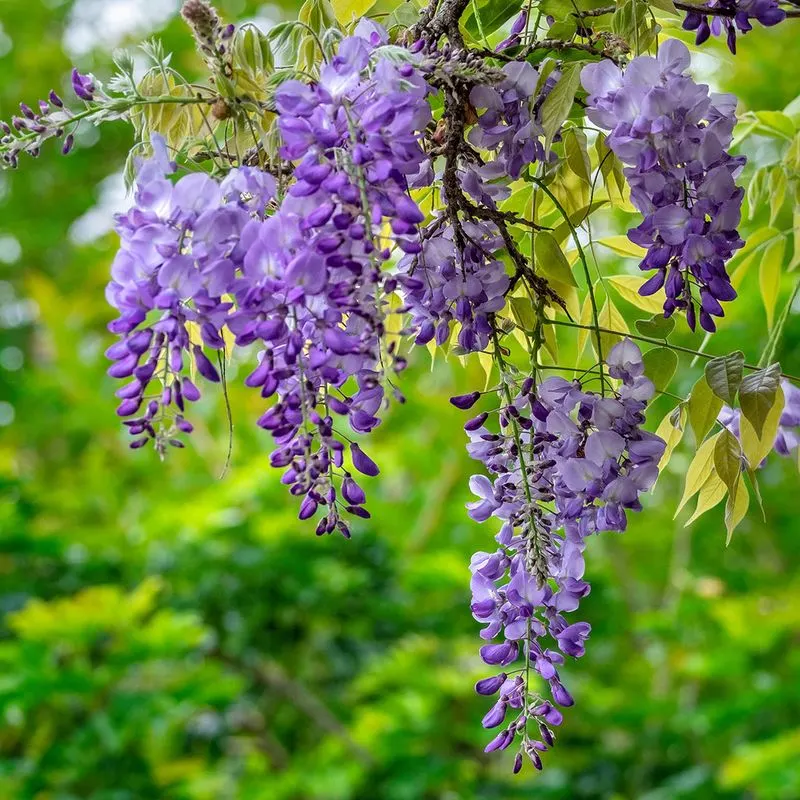
Wisteria, known for its strikingly beautiful flowers, can be a gardener’s dream or nightmare. The allure of its cascading blooms often belies the patience required to nurture it from a seedling. Wisteria seedlings can take years to mature enough to produce flowers. In some cases, gardeners may find themselves waiting over a decade.
These vines also require a sturdy structure to support their weight as they grow. Their aggressive nature can overwhelm smaller plants and structures. For those seeking quicker results, purchasing a mature plant may prove more rewarding.
Morning Glory

Morning glories are a sight to behold with their vivid, trumpet-shaped flowers. Yet when starting from seedlings, they require a significant amount of care and attention. These vines are fast growers but can become invasive if not monitored carefully.
Seedlings may need frequent transplanting and adjustments to light and water levels. While the blooms are a visual treat, they can attract unwanted pests that can damage other plants. Opting for seeds instead might be more manageable and cost-effective for eager gardeners.
Honeysuckle

The intoxicating scent of honeysuckle is a delight, but cultivating it from a seedling requires patience. Young honeysuckle plants can be finicky, demanding particular soil conditions and consistent moisture.
These vines tend to sprawl and can become unruly if not pruned regularly. As they establish themselves, they can overpower surrounding plants. Starting with a more established plant can save time and ensure a fragrant, manageable addition to your garden.
Clematis
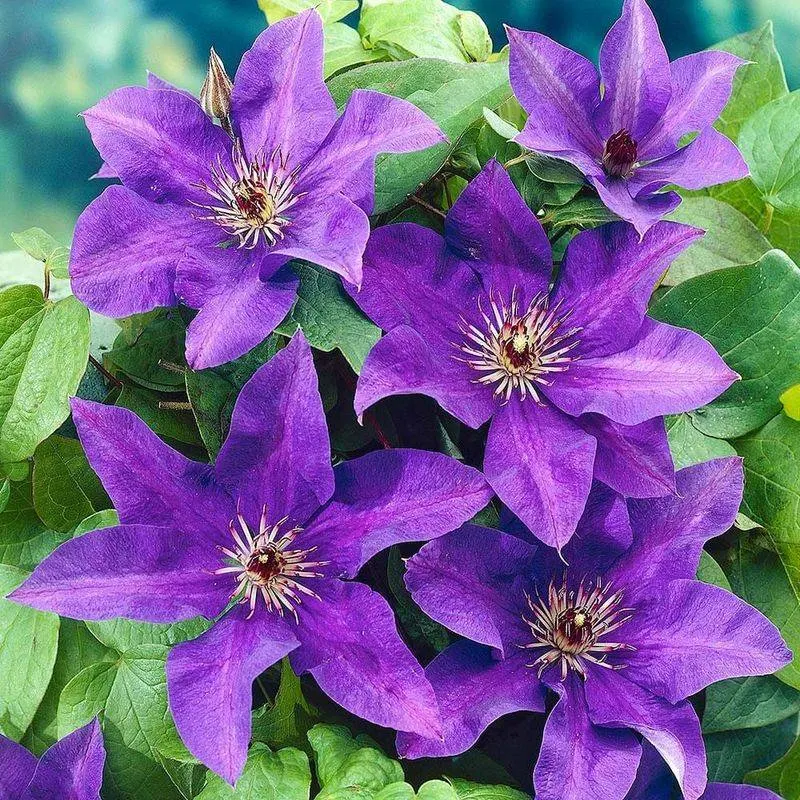
Clematis boasts a wide variety of colors and shapes, making it a favorite among gardeners. However, seedlings can be delicate and temperamental. They often require precise soil conditions and careful watering to thrive.
These vines are prone to diseases and pests, which can stunt growth. Investing in a more mature clematis plant can bypass the initial struggles and allow gardeners to enjoy their blossoms sooner rather than later.
Passionflower

Passionflowers mesmerize with their intricate, otherworldly blooms. Yet starting from seedlings can pose challenges. These young plants can be sensitive to temperature changes and require consistent humidity levels.
Their growth can be unpredictable, with some seedlings taking years to establish themselves. For those keen on adding this exotic beauty to their garden, starting with a potted plant may offer a more reliable and faster route to success.
Virginia Creeper

Virginia creeper captivates with its vibrant red foliage, especially in the fall. While tempting to start from seedlings, these vines can quickly become invasive. Young plants need careful monitoring to prevent them from overtaking other areas of the garden.
Their rapid growth can be a double-edged sword, necessitating frequent pruning. Opting for seeds or a more controlled introduction can help maintain balance in your garden space.
Trumpet Vine
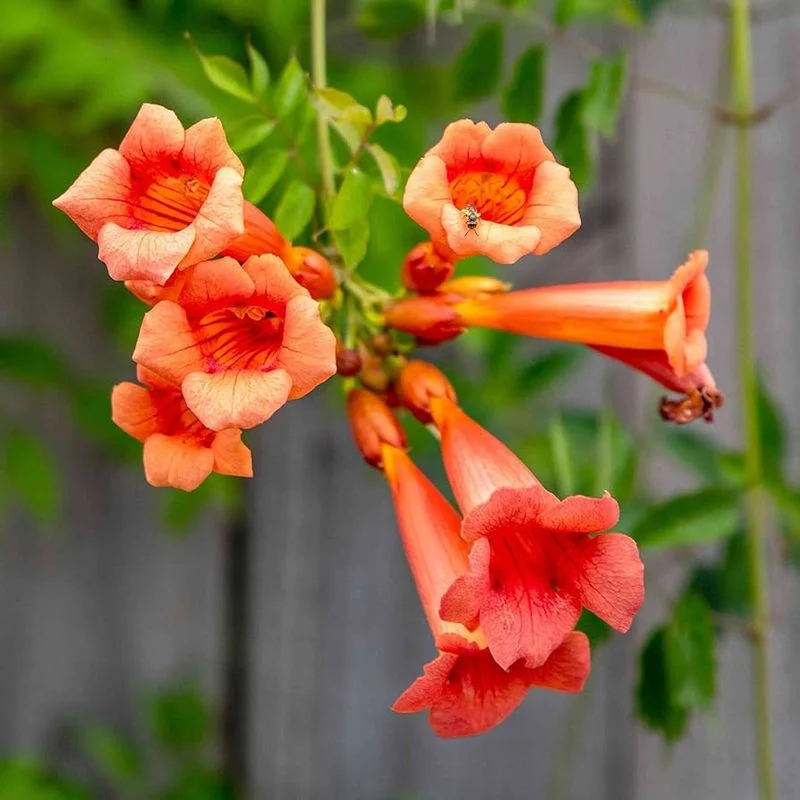
The bold blooms of the trumpet vine are a magnet for hummingbirds, adding vibrant life to any garden. Starting from seedlings, however, can be labor-intensive. These plants demand a sunny spot and well-draining soil to thrive.
Their aggressive growth can become problematic, potentially damaging structures like fences and walls. Considering their invasive nature, purchasing a more mature plant can provide more immediate rewards without the lengthy wait.
Black-eyed Susan Vine
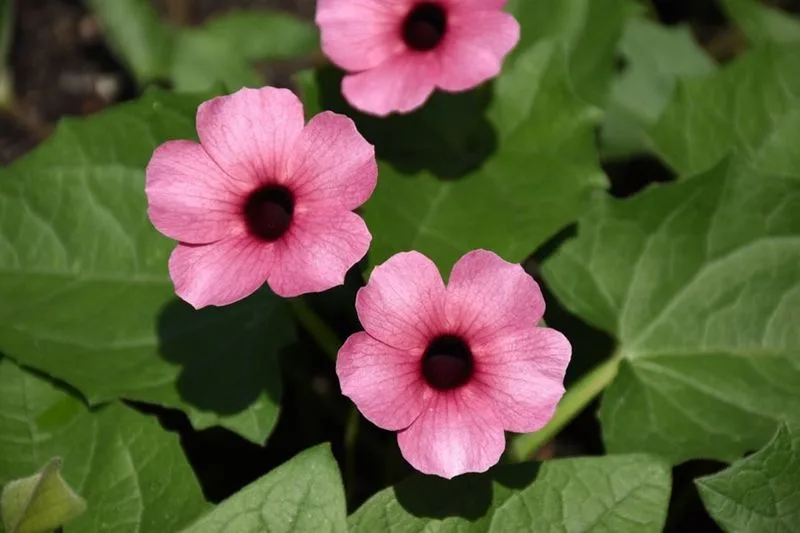
Cheerful black-eyed Susan vines brighten gardens with their sunny blooms. Yet growing from seedlings may test a gardener’s patience. These plants are sensitive to varying temperatures and need consistent care.
While they can add charm, their susceptibility to pests makes them a challenge. Opting for plants from a nursery can ensure a healthier and more reliable addition to your garden decorations.
Grape Vines
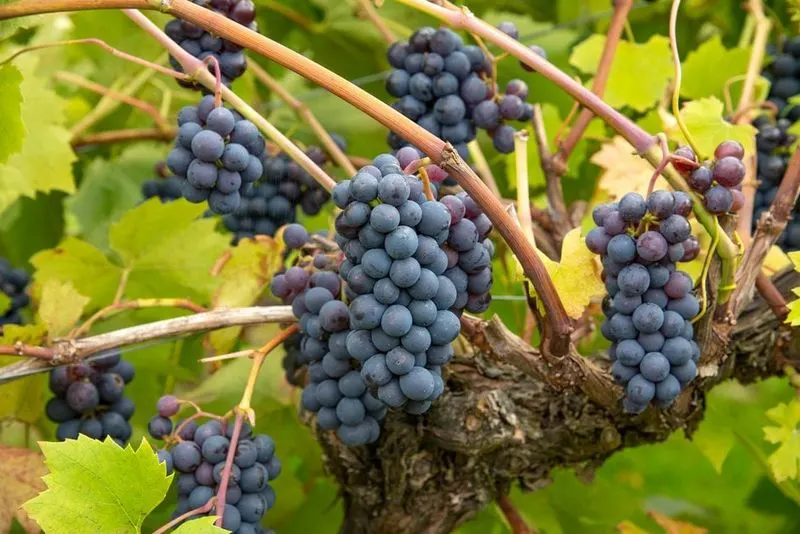
Grapes bring visions of lush vineyards, but starting from seedlings can be a painstaking endeavor. These vines demand a specific climate and soil to prosper, often requiring years before yielding fruit.
Young grape plants are particularly vulnerable to diseases and pests, requiring vigilant care. For anyone dreaming of home-grown grapes, investing in a well-established vine might be the best path to enjoying homemade wine or fresh grapes sooner.
Ivy

Ivy offers a timeless aesthetic but can be more trouble than it’s worth when started from seedlings. These vines grow rapidly and can be difficult to control once established.
Their aggressive nature may lead to structural damage if not carefully managed. For those interested in cultivating ivy, selecting an older, more contained plant may provide a striking visual without the headaches of rampant growth.
Moonflower
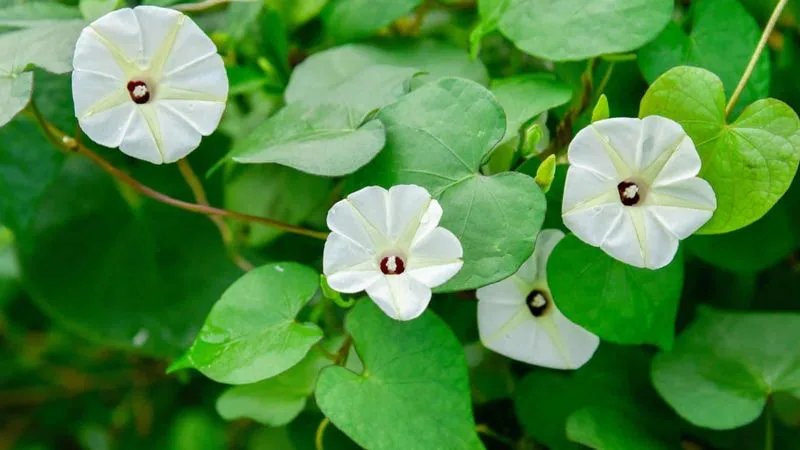
Moonflowers enchant with their large, fragrant blooms that unfold at night. Starting from seedlings involves nurturing these delicate plants through their early stages. They require specific conditions to flourish, including warm temperatures and well-drained soil.
Their sensitivity to cold can be a challenge, making them better suited to more experienced gardeners. Choosing to buy a young plant instead can bypass these hurdles, allowing you to enjoy their evening blossoms more swiftly.
Jasmine
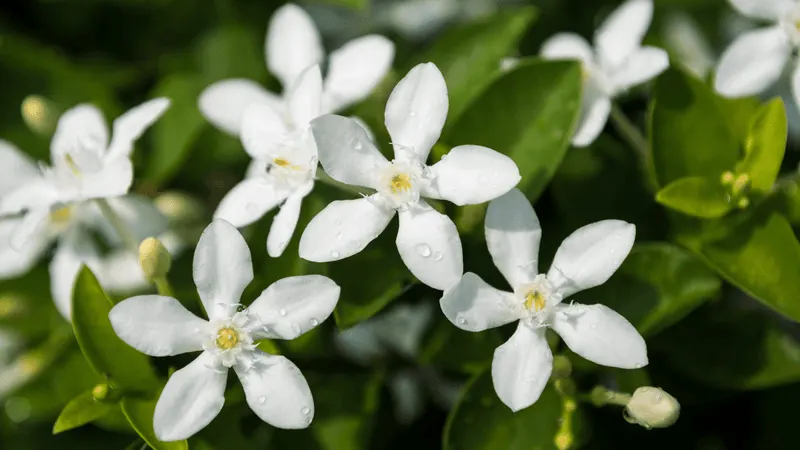
Jasmine’s sweet fragrance is irresistible, but cultivating it from seedlings calls for dedication. These vines thrive in warm, sunny conditions and need careful watering to avoid root rot.
Young jasmine plants are vulnerable to pests like aphids, which can hinder their growth. For a fragrant garden addition with less fuss, starting with a potted jasmine can provide instant aroma and beauty, skipping the growing pains of seedlings.
Bougainvillea
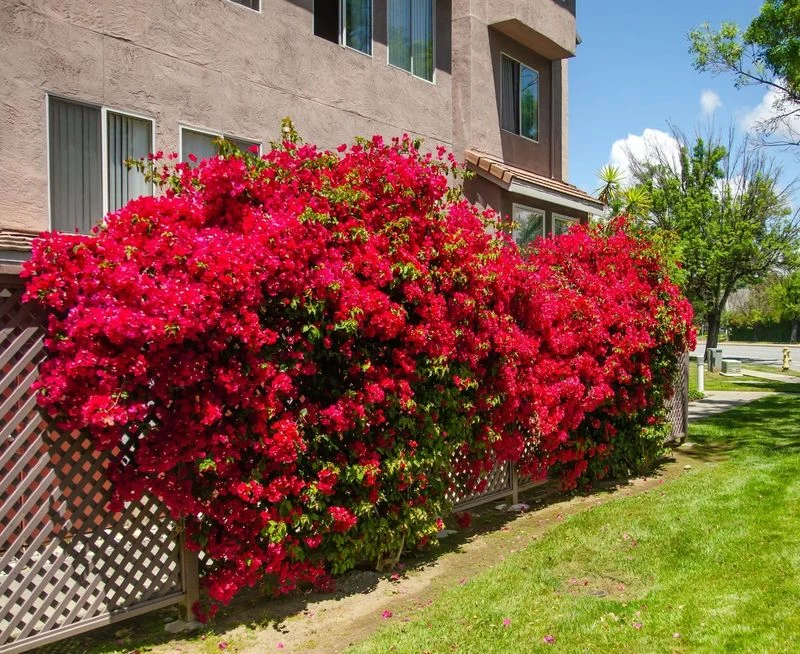
Bougainvillea dazzles with its bold, colorful bracts, yet nurturing it from seedlings is not for everyone. These vines prefer hot, dry climates and can struggle in cooler regions.
Their thorny stems make handling and pruning difficult, requiring careful maintenance. For those craving instant color and vibrancy, opting for a mature bougainvillea can bring the desired flair to your garden with less hassle.
Cypress Vine

The cypress vine’s delicate foliage and striking red flowers make it an alluring choice. Starting from seedlings demands patience, as these young plants are sensitive to transplanting and require a sunny spot to truly shine.
Their rapid growth can become overwhelming, leading to tangled masses if left unchecked. Choosing seeds or a more mature vine might offer a more balanced approach for those wanting this visual delight in their garden.
Sweet Pea

Sweet peas charm with their pastel blooms and enticing fragrance, but starting from seedlings often leads to disappointment. These vines are sensitive to temperature changes and demand rich, well-drained soil.
Their fragile stems can be easily damaged, necessitating careful handling. For those desiring sweet peas’ delightful presence, beginning with seeds or more mature plants might ensure a more reliable and fulfilling gardening experience.
Climbing Hydrangea

Climbing hydrangeas captivate with their lacy blooms and lush foliage. However, nurturing these vines from seedlings is a demanding endeavor. They require moist, well-drained soil and can take years to establish themselves.
Their slow growth and need for a shaded environment might not suit every gardener’s patience levels. Opting for a more mature plant could allow enthusiasts to appreciate their beauty without the lengthy wait associated with seedlings.
Dutchman’s Pipe

Dutchman’s Pipe intrigues with its unusual, pipe-shaped flowers, yet growing from seedlings can be tricky. These vines need a specific environment, including consistent moisture and partial shade.
Their unique blossoms may attract pests, complicating their care. For those curious about this whimsical vine, starting with an already-established plant may offer a chance to enjoy its peculiar beauty without unnecessary complications.

